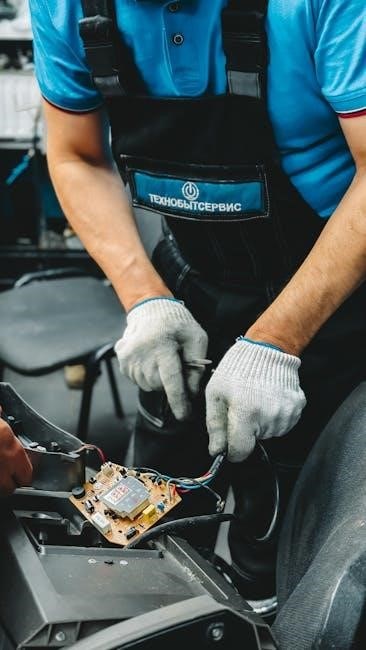Reznor heaters are reliable, but issues like ignition problems or unexpected shutdowns can occur. This guide helps identify and resolve common problems, ensuring optimal performance and safety.
1.1 Overview of Reznor Heaters
Reznor heaters are known for their reliability and efficiency, offering a range of models, including gas-fired and used-oil-fired options. Designed for durability, they provide consistent heating solutions for various industrial and commercial settings. Regular maintenance and proper installation are essential for optimal performance. Models like the RZUDZ75 and INFRA-REZ TR are popular choices, catering to different heating needs. Their space-saving designs and robust construction make them suitable for diverse environments. Understanding these basics helps in identifying and addressing potential issues effectively, ensuring uninterrupted heating performance and safety.
1.2 Importance of Regular Maintenance
Regular maintenance is crucial for ensuring the efficiency, safety, and longevity of Reznor heaters. Proper cleaning and inspection help prevent issues like ignition failures or unexpected shutdowns. Annual cleaning involves removing dust with a vacuum or compressed air, while disconnected from power. Inspecting and replacing worn components can prevent malfunctions. Ensuring correct installation and leveling ensures vibration-free operation. Following the maintenance schedule outlined in the manual helps maintain warranty coverage and prevents costly repairs. Regular servicing also improves air quality and reduces the risk of carbon monoxide leaks, ensuring a safe and reliable heating system.

Common Issues and Solutions
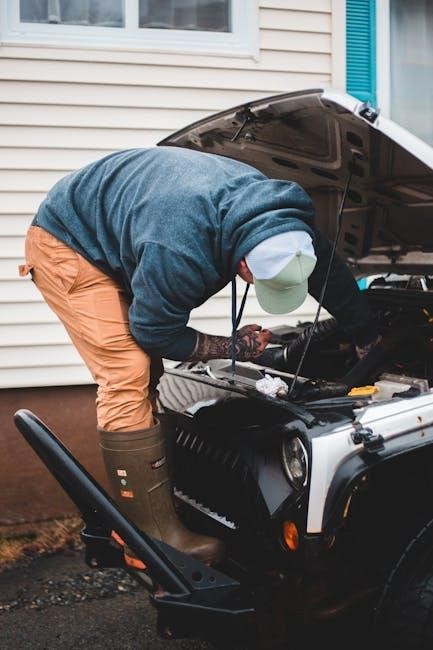
Reznor heaters may face issues like ignition problems, unexpected shutdowns, or temperature malfunctions. Solutions often involve cleaning, inspecting components, and resetting systems as outlined in the manual.
2.1 Ignition Problems
Ignition issues in Reznor heaters can stem from faulty spark plugs, clogged burner orifices, or gas supply problems. Regular cleaning of burner components and ensuring proper gas flow often resolve these problems. If the ignition fails repeatedly, inspect the automatic ignition unit and combustion fans for malfunction. Refer to the manual for detailed diagnostic steps and maintenance procedures to restore proper ignition and functionality to your heater.
2.2 Heater Shutting Off Unexpectedly
If your Reznor heater shuts off unexpectedly, it may indicate issues with the gas supply, ignition system, or venting. First, ensure the gas valve is fully open and check for leaks or kinks in the gas line. Next, inspect the burner for cleanliness and proper airflow. A malfunctioning pressure switch or blocked venting system could also cause shutdowns. Additionally, check the ignition components, such as the spark plug, for wear or dirt. If the problem persists, consult the manual for diagnostic steps or consider professional servicing to restore reliable operation.
2.3 Temperature Control Malfunctions
Temperature control malfunctions in Reznor heaters can lead to inconsistent heating or unsafe operating conditions. Check the thermostat for proper calibration and ensure it’s functioning correctly. If the heater overheats, inspect the high-limit switch and verify it’s not tripped due to excessive temperatures. Clean or replace faulty thermostats or sensors to ensure accurate temperature readings. Additionally, ensure proper airflow around the heater and check for blockages in vents or combustion chambers. If issues persist, refer to the manual for recalibration steps or seek professional assistance to maintain safe and efficient heating performance.
2.4 Error Codes and Their Meanings
Reznor heaters often display error codes to indicate specific issues. Codes like E1, E2, or E3 typically relate to problems such as ignition failures, gas supply issues, or pressure switch malfunctions. Understanding these codes is crucial for quick troubleshooting. For example, an E1 code may indicate a faulty pressure switch, while an E2 could signal low gas pressure. Referencing the manual is essential to decode each error accurately. Addressing these issues promptly ensures safe and efficient operation. If unresolved, consult a professional to prevent further complications and maintain optimal heating performance.
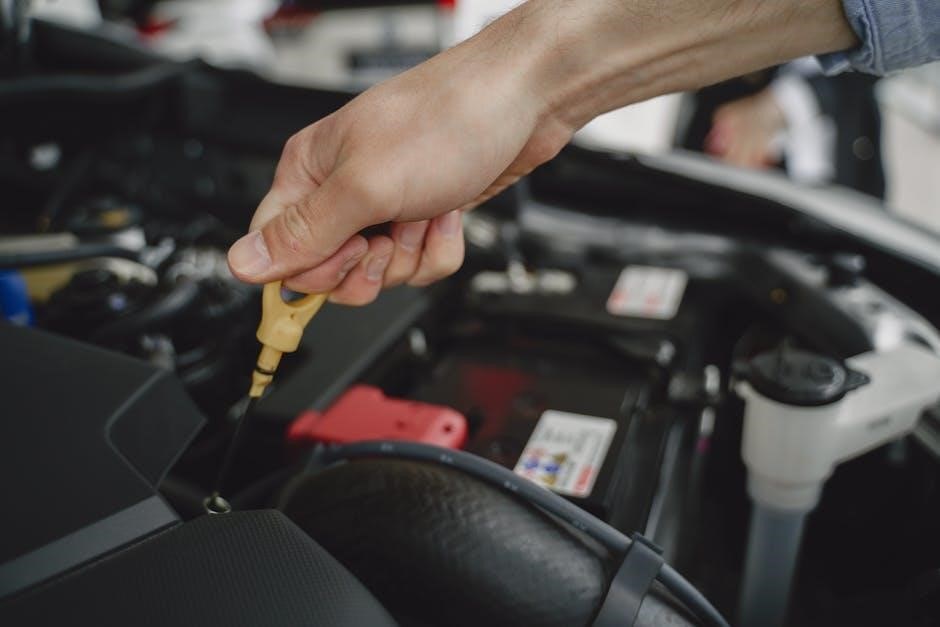
Maintenance and Servicing Tips
Regular cleaning, inspecting components, and ensuring proper ventilation are key to maintaining Reznor heaters. Annual servicing helps prevent issues and ensures efficient operation.
3.1 Annual Cleaning Procedures
Annual cleaning is crucial for maintaining Reznor heaters. Start by disconnecting the unit from power and gas supply. Use a vacuum or compressed air to remove dust from internal components. Inspect heat exchangers and tubes for blockages or damage, cleaning them if necessary. Ensure all vents and grilles are clear to maintain proper airflow. After cleaning, reconnect the heater and test operation. Regular maintenance prevents malfunctions and ensures safe, efficient heating. Always follow manufacturer guidelines for specific cleaning instructions tailored to your Reznor model.
3.2 Inspecting and Replacing Components
Regular inspection of Reznor heater components ensures optimal performance. Check for wear or damage on ignition electrodes, combustion air switches, and pressure switches. Replace any faulty parts immediately. Inspect gas lines for leaks and tighten connections as needed. Ensure all electrical connections are secure and free from corrosion. Refer to the manual for a detailed parts list and replacement procedures. Replacing worn components early prevents costly repairs and maintains heating efficiency. Always use genuine Reznor parts to guarantee compatibility and safety.
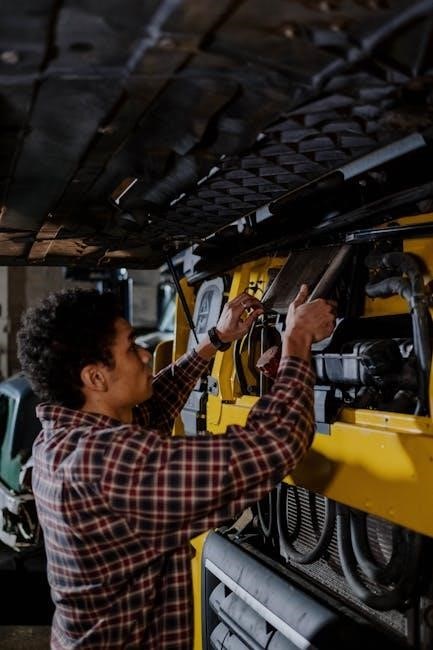
3.3 Proper Ventilation and Clearance Requirements
Proper ventilation and clearance are critical for safe and efficient operation of Reznor heaters. Ensure the heater is installed in a well-ventilated area, free from obstructions. Maintain minimum clearance distances from walls, ceilings, and flammable materials as specified in the manual. Adequate airflow prevents overheating and ensures proper combustion. Improper ventilation can lead to carbon monoxide issues or reduced heater performance. Always verify local building codes and manufacturer guidelines for installation. Proper clearance also helps prevent fire hazards and ensures the heater operates within safe temperature limits, protecting both the unit and the surrounding environment. Regularly inspect the area to maintain these requirements.
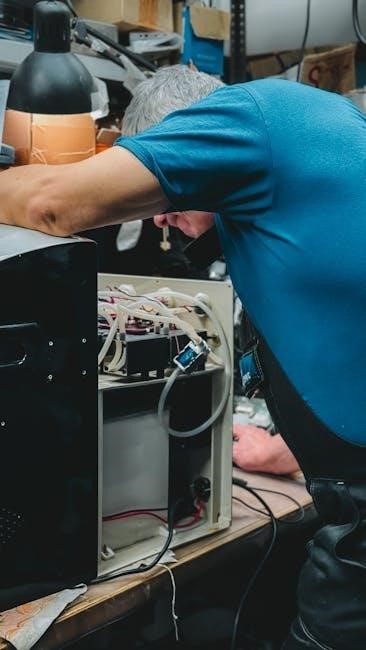
Troubleshooting Guides from the Manual
This section provides comprehensive troubleshooting guides from the Reznor heater manual, covering common issues like ignition problems and unexpected shutdowns. The manual offers step-by-step diagnostics and solutions to address error codes, pressure switch issues, and more. By following these guides, users can identify and resolve problems efficiently, ensuring optimal heater performance and safety.
4.1 Step-by-Step Diagnostic Process
Start by disconnecting the heater from the power supply for safety. Inspect the unit for visible damage or blockages. Check the gas supply pressure and ensure it meets specifications. Clean the burner and heat exchanger annually to prevent dust buildup. Verify proper ventilation and clearance requirements. Test the combustion air proving switch and pressure switch functionality. Refer to the error codes in the manual for specific issues. If the heater shuts down unexpectedly, check for ignition problems or faulty sensors. Always follow the manual’s instructions for resetting or re-commissioning the heater after servicing.
4.2 Resetting the Heater

To reset the Reznor heater, first ensure it is powered off and allow it to cool. Locate the reset button, typically found on the control panel or near the ignition unit. Press and hold the reset button for 10-15 seconds to clear any error codes. Restore power and test the heater by turning it on. If the issue persists, consult the manual for specific reset instructions, as procedures may vary by model. Always verify that the heater has been properly serviced before attempting a reset to ensure safe and efficient operation.
4.3 Understanding Pressure Switch Issues
Pressure switch issues are common in Reznor heaters, often causing shutdowns. These switches monitor combustion air flow and gas pressure. If the switch fails, the heater won’t ignite or operate. Check for blockages in venting or improper gas supply pressures. Ensure the heater is installed level and vibration-free, as misalignment can trigger the switch. Refer to the manual for specific pressure thresholds and testing procedures. Cleaning or replacing the switch may be necessary if faults persist. Always follow safety guidelines when handling electrical and gas components to avoid hazards during diagnostics and repairs.

Advanced Troubleshooting Techniques
Advanced troubleshooting involves checking gas supply pressures, testing combustion air proving switches, and ensuring proper system recalibration after repairs for optimal Reznor heater performance;
5.1 Checking Gas Supply Pressures
Checking gas supply pressures is critical for ensuring proper heater operation. For pressures above 1/2 PSI or 50mbar, disconnect the heater and manual valve from the gas supply line. Cap or plug the supply line to isolate it during testing. Use a manometer to measure pressure accurately. Ensure the supply line is free from leaks or obstructions. Refer to the troubleshooting section for probable causes if pressure readings are inconsistent. Proper gas pressure is essential for reliable ignition and combustion, preventing issues like shutdowns or error codes. Always follow safety guidelines when handling gas lines and components.
5.2 Testing Combustion Air Proving Switches
Testing combustion air proving switches ensures proper airflow for safe ignition and operation. Use a manometer to measure pressure across the switch, verifying it opens and closes correctly. If the switch fails to activate, check for blockages in the combustion air intake or venting system. High or low pressure readings may indicate a need for recalibration or replacement. Refer to the troubleshooting manual for specific pressure thresholds and adjustment procedures. A malfunctioning switch can cause the heater to shut down, so addressing this issue promptly is essential for reliable operation and safety. Always follow safety guidelines when testing electrical and gas components.
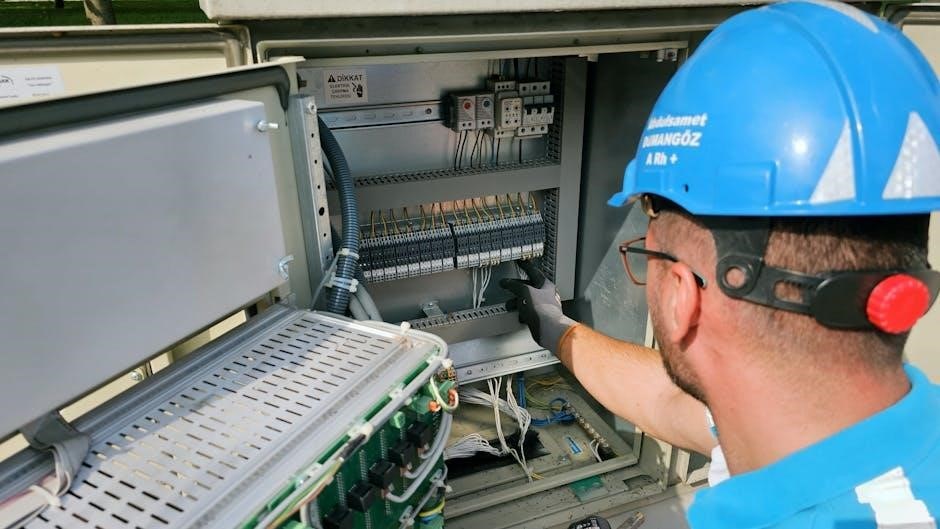
5.3 Re-Commissioning After Servicing
Re-commissioning a Reznor heater after servicing is crucial to ensure proper operation. Start by verifying all gas supply lines and electrical connections are secure. Reset the heater’s controls and perform a full ignition cycle test. Check for any error codes or unusual behavior. Refer to the manual for specific re-commissioning procedures, as improper steps may lead to performance issues or safety risks. Ensure all safety protocols are followed, and the heater operates within specified parameters. If issues persist, consult the troubleshooting section or contact a certified technician. Proper re-commissioning guarantees efficient and safe heater operation.
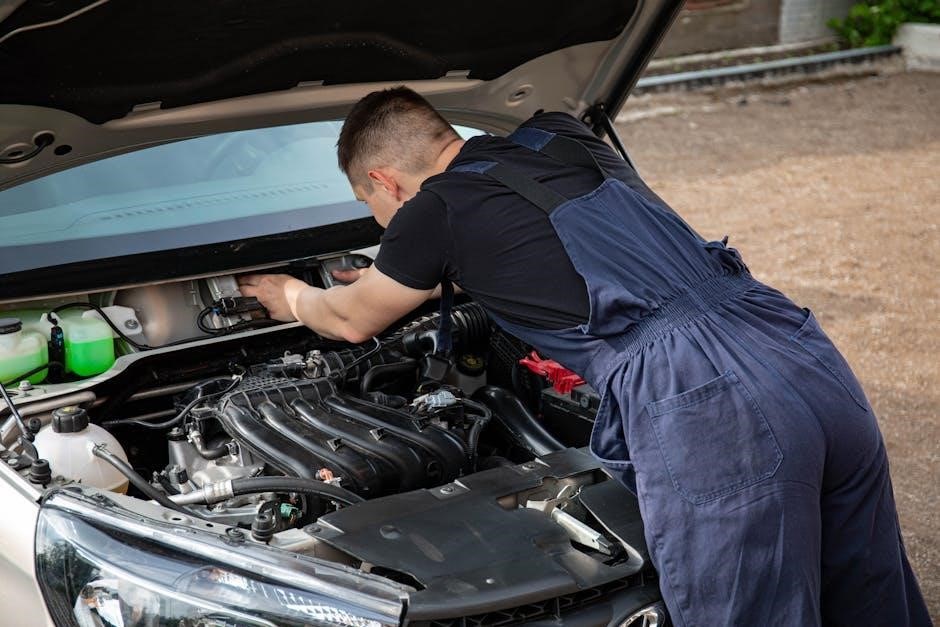
Safety Precautions
Always disconnect power before servicing. Ensure proper installation and leveling to avoid hazards. Follow manual guidelines for safe operation and maintenance procedures to prevent accidents.
6.1 Disconnecting the Heater for Maintenance
Before performing any maintenance, ensure the heater is completely disconnected from both power and gas supplies. Turn off the main power switch and verify there is no voltage using a multimeter. For gas-powered models, shut the manual valve on the supply line and consider capping or plugging the line to prevent accidental gas flow. Allow the unit to cool down to avoid burns or injuries. Always follow the manufacturer’s instructions and safety guidelines to ensure a secure working environment during servicing or repairs.
6.2 Ensuring Proper Installation and Leveling
Proper installation and leveling are crucial for the safe and efficient operation of your Reznor heater. Ensure the unit is placed on a level surface to prevent vibration and uneven combustion. Check the manufacturer’s specifications for minimum clearance requirements from walls and other obstacles to ensure proper airflow and ventilation. Secure all shipping supports and re-tighten any screws or bolts that may have loosened during transit. Misalignment or improper leveling can lead to performance issues or safety hazards, so double-check all installation criteria before operating the heater.
